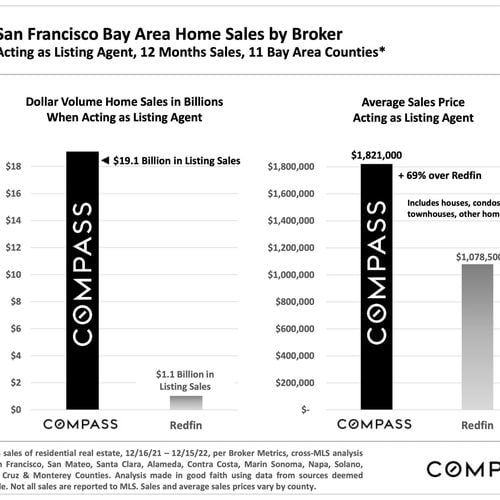As a buyer in California, the Residential Purchase Agreement that you use to write an offer to purchase a home is greatly in your favor. There are a number of contingencies that buyers are often put in place in the default language of the agreement that protect them by giving multiple ways to “safely” exit the transaction. However, the state of California also allows buyers to create non-contingent contracts to purchase a home – and many of them often do, especially in super-competitive markets like the Bay Area and Silicon Valley specifically. In this article, I will dive deep and explore cancelling a non-contingent contract in our area.
These non-contingent contracts are essentially a promise that you’re going to purchase a home, no matter what. These offers say that you’re not worried about home inspections, loan contingencies, appraisals, availability of insurance, or any of the other aspects of a real estate purchase that buyers often cite as reasons to back out of a contract.
A buyer would typically only write a non-contingent contract when the seller has provided a full and complete up-front disclosure package. In these disclosure packages a buyer would find typical inspection reports, records on the house, and disclosure documents which, together, comprise all the material facts about the property that the seller is obligated to disclose to a buyer. This allows the buyer to make an informed decision on what they are actually offering on, before the offer is made. With all this information known prior to submitting an offer, many buyers will feel they have already done all the due-diligence they need and are comfortable writing a non-contingent contract to buy the home.
What happens though if you, as the buyer, want to opt out of the deal after you have made a non-contingent offer on a home? How do you go about canceling a non-contingent contract? Is there any way for you to still get out of the deal if you have a change of heart? While these questions are best suited for a real estate attorney, I can look at my personal experience as a REALTOR in the Bay Area and share my practical experience with you. Understanding the process for and potential ramifications of cancelling a non-contingent contract to buy a home is crucial, especially before you make a non-contingent offer.
It’s All About the Earnest Money Deposit
Like all real estate purchase contracts, these non-contingent contracts also include an earnest money deposit. This deposit is essentially a way of telling the seller that you are an earnest, legitimate buyer – and when you make a non-contingent offer, you are saying that not only are you earnest and legitimate, you are 100% all-in on purchasing the property, come hell or high water – upon pain of losing your deposit if you walk away.
Most buyers will put down an earnest money deposit of somewhere between 1% and 3% of the price of the home, which is held by a neutral third party, the escrow company. In fact, the typical amount for an earnest money deposit in the Bay Area and Silicon Valley is 3% because this is the maximum amount that may be kept as liquidated damages per the default language of the standard purchase agreement. The Liquidated Damages clause in the California Residential Purchase Agreement is pretty clear about what happens to the earnest money deposit in the event of buyer’s default.

Liquidated Damages Clause
You will notice that the liquidated damages clause states:
Release of funds will require mutual, Signed release instructions from both Buyer and Seller, judicial decision or arbitration award.
If the buyer makes the decision to pull out of a non-contingent offer to buy a home, a decision needs to be made about the disposition of the earnest money deposit. The money cannot be distributed to the seller or returned back to the buyer until both the seller and the buyer sign escrow instructions which explicitly state where the earnest money deposit is to go. Until buyer and seller agree on who gets the deposit, the funds remain tied up in the escrow account until an agreement is reached (or there is a judicial decision or arbitration award).
This puts the seller in a precarious position. First of all, the seller cannot just go out and find a new buyer for the home, because the escrow company will not hold two deposits from different buyers for the same property. The seller may move the escrow to a new company however, yet few will feel comfortable selling the property with the potential for for litigation over the deposit a real possibility while the issue remains unsettled.
Take note, even if you didn’t put money into an escrow account through an earnest money deposit, the buyer can still be held financially responsible for damages suffered by the seller (although it may be harder for the seller to collect money not yet in escrow). This may happen when a buyer makes a non-contingent offer which is accepted, and the buyer decides to cancel almost from the get-go before the deposit is made. The fact the deposit has not yet been made does not mean the buyer won’t owe the seller the money as damages.
What Can the Buyer Do to Get the Deposit Back?
The first thing a buyer should try in an attempt to get their deposit back is to have their agent explain to the seller’s representative why they feel they are an entitled to a return of the deposit. My advice is to be calm, factual, and professional. Often times even just waiting a day or two will soften the seller up if their initial answer is that they intend to keep the deposit as stipulated in the contract. Just remember, the seller does not hold all the cards in this situation – even though the contract says the seller “shall” retain the deposit as liquidated damages in the event of buyer’s breach, the seller actually needs the buyer to agree, still, to have escrow fork over the deposit.
Ultimately, the buyer’s last resort option in this case may be to threaten civil litigation against the seller. Obviously, if you feel even a hint that it might come to any kind of legal action initiated by either party, your best option is to immediately contact an attorney. A strongly-worded letter from the buyer’s attorney to the seller may work wonders.
The buyer’s threat of a lawsuit creates real problems for the seller. Nobody wants to get sued of course, so the threat of a lawsuit – just the threat – may be enough to get the seller to relent on return the deposit to the buyer. That’s because a lawsuit creates a cloud on the title of the property – the dreaded lis pendens . No lender will offer a loan on a property that has a cloud on its title. Additionally, most cash-paying buyers won’t want to make an offer on a property that is tied up in any kind of litigation, it’s just too much risk and hassle.
These issues increase the likelihood that a buyer would take legal recourse against you for cancelling the deal. However, there are still legal ways for you to get out of the contract.
Buyer Loopholes to Cancel a Non-Contingent Contract
Virtually every home seller in the state of California is required to fill out a Transfer Disclosure Agreement, also referred to as a TDS. This form covers a variety of topics about the property. If the form is delivered to the buyer in person, the buyer has three days to review the information. If the form is delivered through email or another method, the buyer has five days to review the information. However, these days count only if the TDS is delivered after the buyer and seller have signed a purchase offer. If the TDS is delivered prior to offer acceptance, the buyer does not get any additional days to review the TDS.
However, even if the buyer already had the TDS before the offer was accepted, this is where you may be able to find your out. If you’re thinking that you want to change your mind about the purchase, carefully review this form. First of all, make sure that it was filled out completely. If the seller missed anything as minor as a single box that needed to be checked, you have the right to request a new form. If you don’t like any of the information contained in the revised form, you are then given the additional days to review the modified TDS, and can seek to cancel the contract by disapproving of whatever material changes may have been made in the disclosure.
Or, sometimes, a buyer will have learned something about a property after the offer accepted which was not disclosed by the seller – but which they feel that should have been on the TDS, even if the TDS was filled out correctly. In that case, this needs to be brought to the attention of the listing agent’s broker. The broker would likewise be involved in any lawsuit over the deposit or failure to disclose material facts, and the broker may help explain to the seller the perilous nature of a failure to disclose material facts to the buyer, and how maybe it might just be better to let the whole thing slide, and return the buyer’s deposit.
Additionally, as of July 1, 2021, the state of California started requiring sellers to include form FHDS (Fire Hardening and Defensible Space Advisory) that discusses the wildfire hazard associated with a property. Since the form is so new, many buyers and their agents fail to include it. If you did not receive a copy of this form, and the property is in a high or very high fire risk area, you have a legal right to cancel the offer that you made on the home.
Another option is to see if you can research any improvements to the property which required a permit, but the seller failed to obtain a permit for it. The TDS asks about, in Section II, Item C:
4. Room additions, structural modifications, or other alterations or repairs made without necessary permits
5. Room additions, structural modifications, or other alterations or repairs not in compliance with building code
Of course, if the seller did un-permitted work, or work not in compliance with building codes, the seller may argue they did not know that such work required a permit, or that it wasn’t in compliance with building codes. After all, even simple things like changing a toilet or adding a circuit to an electrical panel to supply some outside lights may technically require a permit in many jurisdictions. A little research into the permit history and requirements versus the actual improvements on the property may demonstrate the seller has failed to disclose required material facts, creating an opening for a buyer to exit from the contract.
Remember, this doesn’t just include improvements that they made to the property. If you can find any additions or improvements that a previous owners made without a permit that the seller knew about, the same thing applies. The TDS does not ask only about improvements the seller has made – it asks about all the improvements made to the property that the seller is aware of.
Ideally, neither buyers nor sellers would look for a way out of a contract after it has been signed. However, there are some options available to you. Make sure that you’re comfortable with every detail of the property before you make an offer, including the property’s insurability, a topic which has surged to the forefront in recent months.
Prime Single Family Homes for Sale in Silicon Valley
2
3
4
5
6
7
8
9
10
11
12
13
14
15
16
17
18
19
20
21
22
23
24
25



